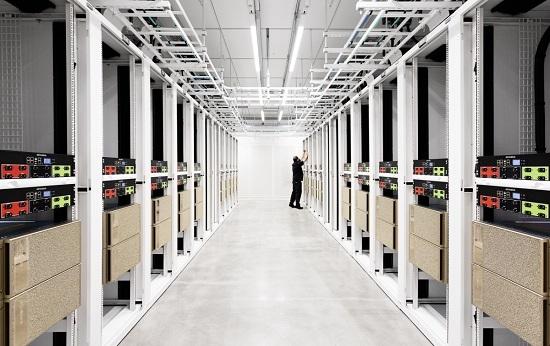He writes:
During our careers, the opportunity to work on something genuinely ground-breaking, something pioneering that raises the bar, is extremely rare. In October, the Kao Data team was contacted by NVIDIA regarding their Cambridge-1 project. As soon as we saw the plans for the UK’s most powerful supercomputer, we were hooked.
Collaborating with NVIDIA comes with an expectation that you’ll be operating alongside some of the smartest minds in the industry; that innovation is everything and that you’ll be performing at pace. Supercharged pace. NVIDIA’s Cambridge-1 project has exceeded those expectations.
We went from first contact to a fully agreed plan of deployment in less than a month. And our partnership with one of the world’s leading technology companies - has paved the way for something truly remarkable to unfold within our Harlow campus.
Supercomputers may be rapid in operation, but they’re generally lethargic in evolution. Most large-scale, traditional supercomputers – the majority of those on the current TOP500 list – take, on average, a couple of years of concept planning, design and build.
Yet in less than 20 weeks, Cambridge-1 has gone from concept to the first stages of operation. Across this period, I’m exceptionally proud of how our agile team at Kao Data has pulled out all the stops to support NVIDIA in their race to build one of the world’s most powerful and sustainable supercomputers.
It would be impressive for this speed of build to take place in normal, ‘business-as-usual’ circumstances. But to install a 400-petaflops supercomputer in rapid time, during the most acute months of a global pandemic, is nothing short of extraordinary.
As our COO, Paul Finch remarked: “Cambridge-1 has been deployed at a speed I have never witnessed during my (30-year) career.”
Putting this into perspective, due to Covid-19 restrictions, our campus has effectively been locked-down, with access reduced to mission-critical staff only, working in rotating shifts and under the strictest of operating guidelines. Added to this, quarantine periods for international arrivals and subsequent international travel bans have resulted in much of the deployment being overseen remotely from the United States.
Throughout the journey, the innovative culture within both organisations has shone through – along with a ‘can-do’ attitude resulting in obstacles being quickly overcome. Our HPC-specialist technical and operations teams led by Paul Finch, Gérard Thibault and Howard Spooner have worked hand-in-hand with NVIDIA and it’s been a privilege to provide a bespoke home for such state-of-the-art technology.
Cambridge-1’s strategic location reinforces the Cambridge-to-London ‘UK Innovation Corridor’ as the country’s world class region for life sciences, pharma and scientific research. When fully operational, it will provide huge computing capacity to healthcare companies and institutions such as AstraZeneca, GSK, Oxford Nanopore, King's College London and Guy's and St Thomas' NHS Foundation Trust.
As the UK moves out of the reactive phase of the Covid-19 pandemic, I believe Cambridge-1 is a great example of how we can genuinely ‘build-back-better’. Having supercomputing prowess like NVIDIA’s DGX SuperPOD architecture accessible and positioned in close proximity to cutting-edge healthcare, life sciences and bioinformatics clusters, enables us to better prepare for future pandemics.
Positioning AI-accelerated supercomputing resources, powered by 100% renewable energy, directly within a research ecosystem is, in my opinion, the way forward. Indeed, I agree with our VP, Spencer Lamb, who has spent more than 25 years working within UK and European research HPC, that Cambridge-1 provides the blueprint for “a completely unique, necessary and sustainable approach to the future of research computing.”
Interestingly, with the deployment of Cambridge-1 at Kao Data, we have come full circle as a company. Back in 1966, the campus was the birthplace of optical fibre technology, first discovered by the brilliant Sir Charles Kao – from whom we take our name. Thousands of optical fibres networked together will facilitate Cambridge-1’s operation and connect it to the wider world. As NVIDIA’s VP of Solutions Architecture and Engineering Marc Hamilton notes in his appearance on the NVIDIA AI Podcast, I’m sure Sir Charles would be very proud to see the most powerful supercomputer in the UK – incorporating his optical fibre technology – working from the very site where he first pioneered it.
Image (top): NVIDIA Cambridge-1 (photo courtesy of NVIDIA)
Kao Data's data centre campus
My team and I are looking forward to continuing to support NVIDIA over the final stages of Cambridge-1’s installation and testing, and seeing the outputs from some of the incredible science and research that will take place within it. Undoubtedly it will tackle some of healthcare’s most complex and hard-to-solve challenges. But, as I have seen first-hand, when you’re working at the speed of light, anything is possible.
[[{"fid":"291672","view_mode":"default","fields":{"format":"default","alignment":"","field_file_image_alt_text[und][0][value]":"Kao Data Centre","field_file_image_title_text[und][0][value]":"Kao Data Centre"},"link_text":false,"type":"media","field_deltas":{"1":{"format":"default","alignment":"","field_file_image_alt_text[und][0][value]":"Kao Data Centre","field_file_image_title_text[und][0][value]":"Kao Data Centre"}},"attributes":{"alt":"Kao Data Centre","title":"Kao Data Centre","class":"media-element file-default","data-delta":"1"}}]]
